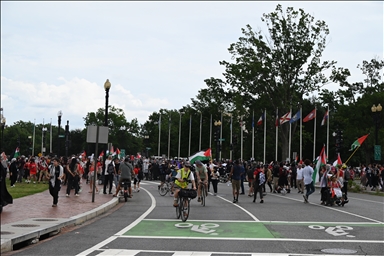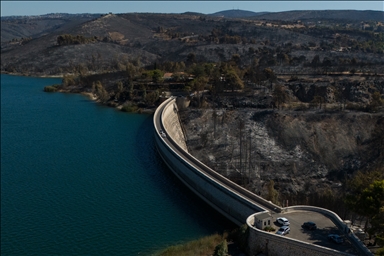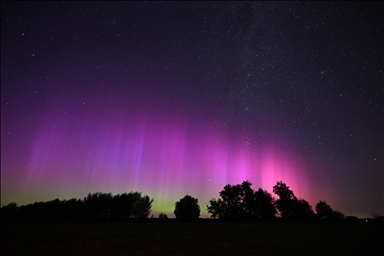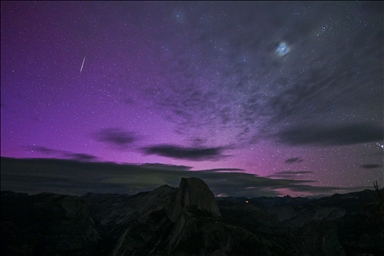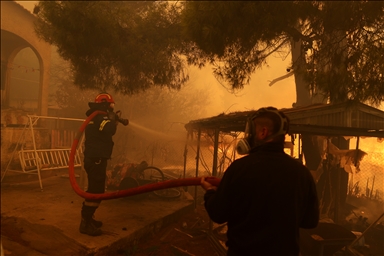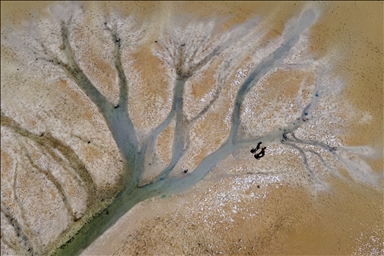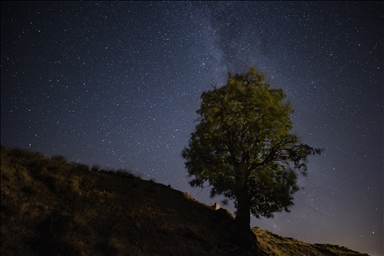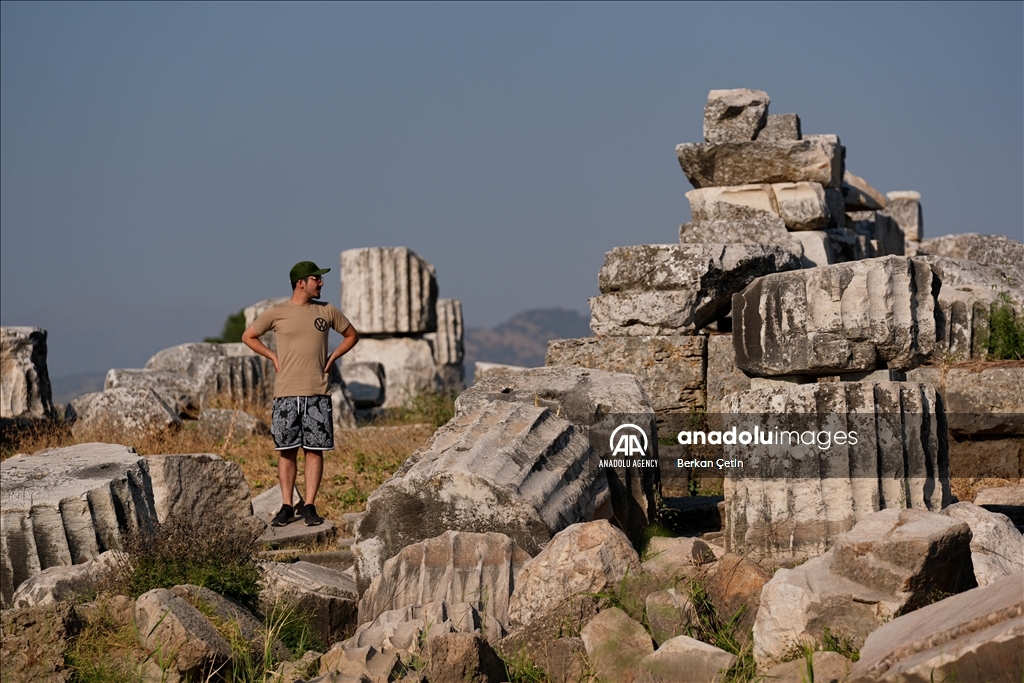
AYDIN, TURKIYE - AUGUST 11: An aerial view from the ancient city of Magnesia, located in Aydin's Germencik district, Turkiye on August 11, 2024. The city was established in the 4th century BC by the Magnetes from Thessaly, according to ancient sources. The city, which played a significant commercial and strategic role due to its connection between Ephesus, Priene, and Tralleis, features a grid-plan street system and is known for its production of grain and figs and contains several notable structures, including the Artemis Sanctuary, the Bazaar Basilica, a theater, a 32-seat latrine, a bathhouse, an odeon, a 30,000-seat stadium, a Gymnasion, a Roman temple, and Byzantine walls. Magnesia was also part of the Seleucid and Pergamene kingdoms, as being one of the locations where the Artemis Festival, a major religious event of the era, was held. ( Berkan Çetin - Anadolu Agency )

AYDIN, TURKIYE - AUGUST 11: A view of the Artemis Sanctuary located in the ancient city of Magnesia in Aydin's Germencik district, Turkiye on August 11, 2024. The city was established in the 4th century BC by the Magnetes from Thessaly, according to ancient sources. The city, which played a significant commercial and strategic role due to its connection between Ephesus, Priene, and Tralleis, features a grid-plan street system and is known for its production of grain and figs and contains several notable structures, including the Artemis Sanctuary, the Bazaar Basilica, a theater, a 32-seat latrine, a bathhouse, an odeon, a 30,000-seat stadium, a Gymnasion, a Roman temple, and Byzantine walls. Magnesia was also part of the Seleucid and Pergamene kingdoms, as being one of the locations where the Artemis Festival, a major religious event of the era, was held. ( Berkan Çetin - Anadolu Agency )
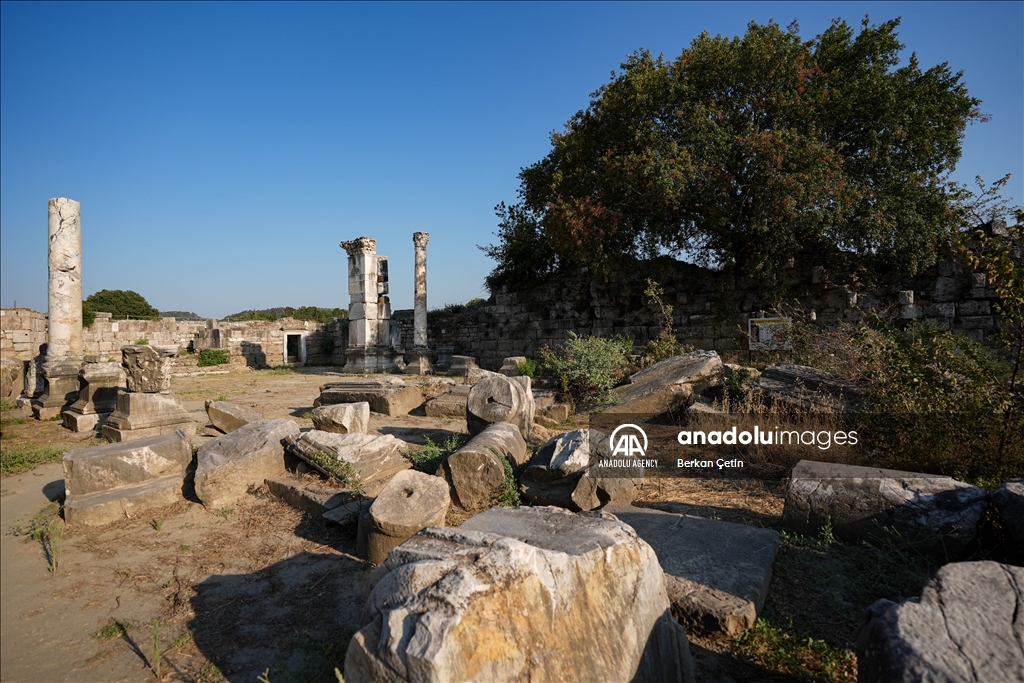
AYDIN, TURKIYE - AUGUST 11: A view of the Bazaar Basilica located in the ancient city of Magnesia in Aydin's Germencik district, Turkiye on August 11, 2024. The city was established in the 4th century BC by the Magnetes from Thessaly, according to ancient sources. The city, which played a significant commercial and strategic role due to its connection between Ephesus, Priene, and Tralleis, features a grid-plan street system and is known for its production of grain and figs and contains several notable structures, including the Artemis Sanctuary, the Bazaar Basilica, a theater, a 32-seat latrine, a bathhouse, an odeon, a 30,000-seat stadium, a Gymnasion, a Roman temple, and Byzantine walls. Magnesia was also part of the Seleucid and Pergamene kingdoms, as being one of the locations where the Artemis Festival, a major religious event of the era, was held. ( Berkan Çetin - Anadolu Agency )

AYDIN, TURKIYE - AUGUST 11: A view of the ancient city of Magnesia in Aydin's Germencik district, Turkiye on August 11, 2024. The city was established in the 4th century BC by the Magnetes from Thessaly, according to ancient sources. The city, which played a significant commercial and strategic role due to its connection between Ephesus, Priene, and Tralleis, features a grid-plan street system and is known for its production of grain and figs and contains several notable structures, including the Artemis Sanctuary, the Bazaar Basilica, a theater, a 32-seat latrine, a bathhouse, an odeon, a 30,000-seat stadium, a Gymnasion, a Roman temple, and Byzantine walls. Magnesia was also part of the Seleucid and Pergamene kingdoms, as being one of the locations where the Artemis Festival, a major religious event of the era, was held. ( Berkan Çetin - Anadolu Agency )
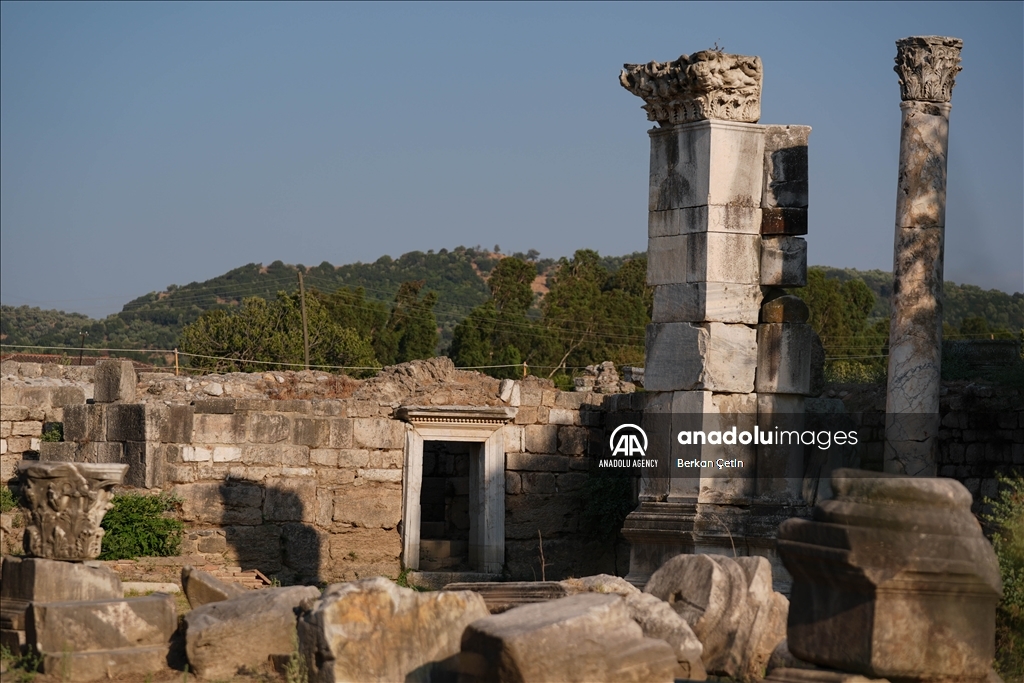
AYDIN, TURKIYE - AUGUST 11: A view of the Bazaar Basilica located in the ancient city of Magnesia in Aydin's Germencik district, Turkiye on August 11, 2024. The city was established in the 4th century BC by the Magnetes from Thessaly, according to ancient sources. The city, which played a significant commercial and strategic role due to its connection between Ephesus, Priene, and Tralleis, features a grid-plan street system and is known for its production of grain and figs and contains several notable structures, including the Artemis Sanctuary, the Bazaar Basilica, a theater, a 32-seat latrine, a bathhouse, an odeon, a 30,000-seat stadium, a Gymnasion, a Roman temple, and Byzantine walls. Magnesia was also part of the Seleucid and Pergamene kingdoms, as being one of the locations where the Artemis Festival, a major religious event of the era, was held. ( Berkan Çetin - Anadolu Agency )
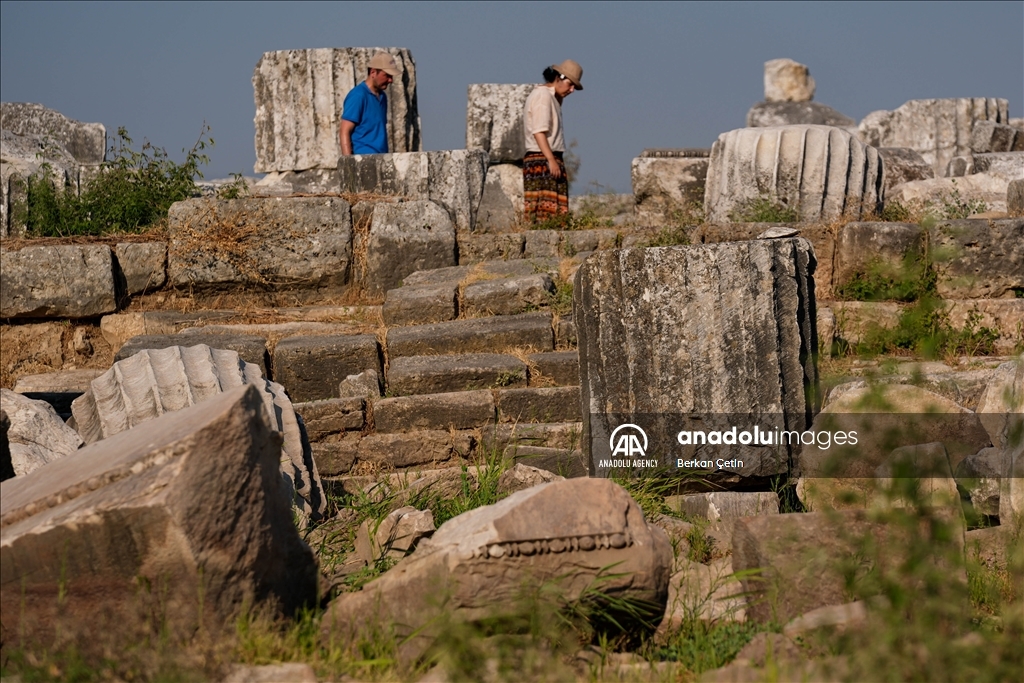
AYDIN, TURKIYE - AUGUST 11: A view of the ancient city of Magnesia in Aydin's Germencik district, Turkiye on August 11, 2024. The city was established in the 4th century BC by the Magnetes from Thessaly, according to ancient sources. The city, which played a significant commercial and strategic role due to its connection between Ephesus, Priene, and Tralleis, features a grid-plan street system and is known for its production of grain and figs and contains several notable structures, including the Artemis Sanctuary, the Bazaar Basilica, a theater, a 32-seat latrine, a bathhouse, an odeon, a 30,000-seat stadium, a Gymnasion, a Roman temple, and Byzantine walls. Magnesia was also part of the Seleucid and Pergamene kingdoms, as being one of the locations where the Artemis Festival, a major religious event of the era, was held. ( Berkan Çetin - Anadolu Agency )
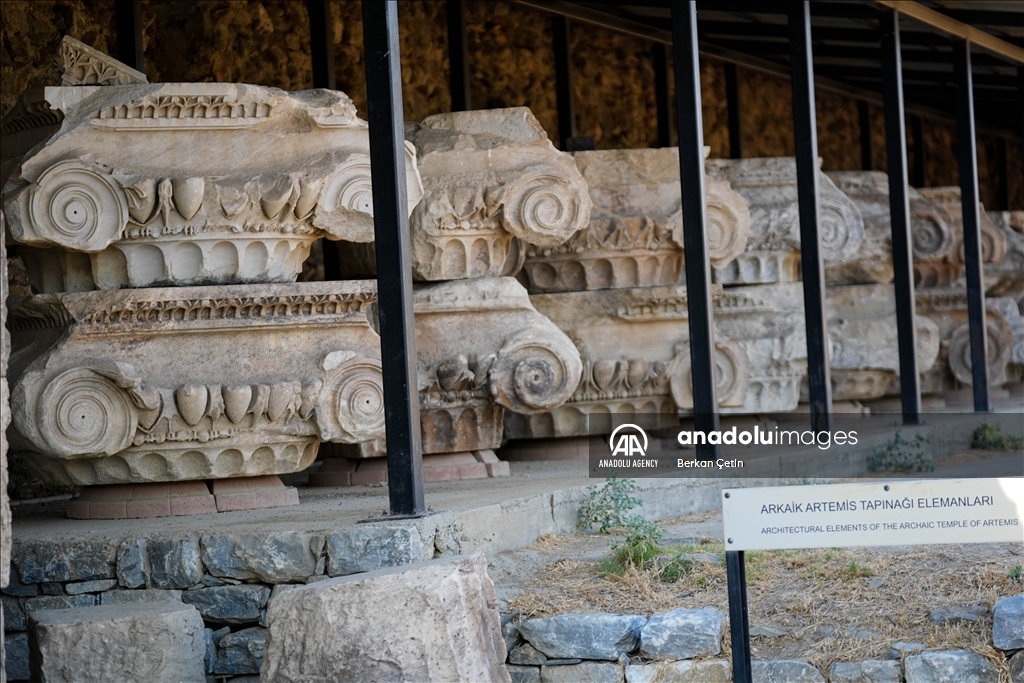
AYDIN, TURKIYE - AUGUST 11: A view from the ancient city of Magnesia in Aydin's Germencik district, Turkiye on August 11, 2024. The city was established in the 4th century BC by the Magnetes from Thessaly, according to ancient sources. The city, which played a significant commercial and strategic role due to its connection between Ephesus, Priene, and Tralleis, features a grid-plan street system and is known for its production of grain and figs and contains several notable structures, including the Artemis Sanctuary, the Bazaar Basilica, a theater, a 32-seat latrine, a bathhouse, an odeon, a 30,000-seat stadium, a Gymnasion, a Roman temple, and Byzantine walls. Magnesia was also part of the Seleucid and Pergamene kingdoms, as being one of the locations where the Artemis Festival, a major religious event of the era, was held. ( Berkan Çetin - Anadolu Agency )

AYDIN, TURKIYE - AUGUST 11: A view from the ancient city of Magnesia in Aydin's Germencik district, Turkiye on August 11, 2024. The city was established in the 4th century BC by the Magnetes from Thessaly, according to ancient sources. The city, which played a significant commercial and strategic role due to its connection between Ephesus, Priene, and Tralleis, features a grid-plan street system and is known for its production of grain and figs and contains several notable structures, including the Artemis Sanctuary, the Bazaar Basilica, a theater, a 32-seat latrine, a bathhouse, an odeon, a 30,000-seat stadium, a Gymnasion, a Roman temple, and Byzantine walls. Magnesia was also part of the Seleucid and Pergamene kingdoms, as being one of the locations where the Artemis Festival, a major religious event of the era, was held. ( Berkan Çetin - Anadolu Agency )
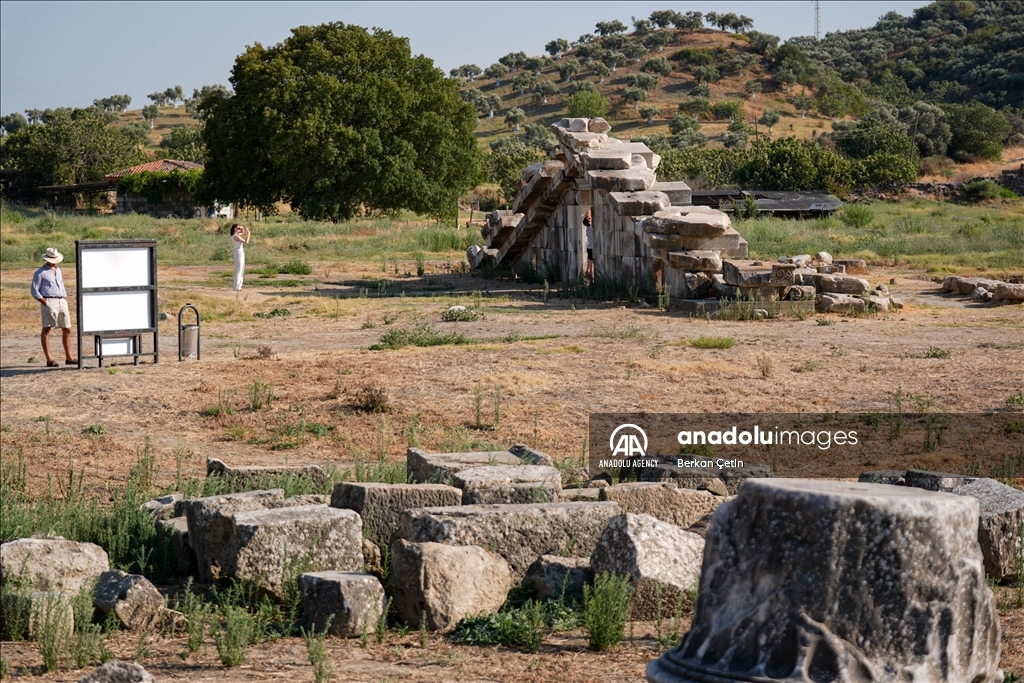
AYDIN, TURKIYE - AUGUST 11: A view from the ancient city of Magnesia in Aydin's Germencik district, Turkiye on August 11, 2024. The city was established in the 4th century BC by the Magnetes from Thessaly, according to ancient sources. The city, which played a significant commercial and strategic role due to its connection between Ephesus, Priene, and Tralleis, features a grid-plan street system and is known for its production of grain and figs and contains several notable structures, including the Artemis Sanctuary, the Bazaar Basilica, a theater, a 32-seat latrine, a bathhouse, an odeon, a 30,000-seat stadium, a Gymnasion, a Roman temple, and Byzantine walls. Magnesia was also part of the Seleucid and Pergamene kingdoms, as being one of the locations where the Artemis Festival, a major religious event of the era, was held. ( Berkan Çetin - Anadolu Agency )

AYDIN, TURKIYE - AUGUST 11: A view from the ancient city of Magnesia in Aydin's Germencik district, Turkiye on August 11, 2024. The city was established in the 4th century BC by the Magnetes from Thessaly, according to ancient sources. The city, which played a significant commercial and strategic role due to its connection between Ephesus, Priene, and Tralleis, features a grid-plan street system and is known for its production of grain and figs and contains several notable structures, including the Artemis Sanctuary, the Bazaar Basilica, a theater, a 32-seat latrine, a bathhouse, an odeon, a 30,000-seat stadium, a Gymnasion, a Roman temple, and Byzantine walls. Magnesia was also part of the Seleucid and Pergamene kingdoms, as being one of the locations where the Artemis Festival, a major religious event of the era, was held. ( Berkan Çetin - Anadolu Agency )
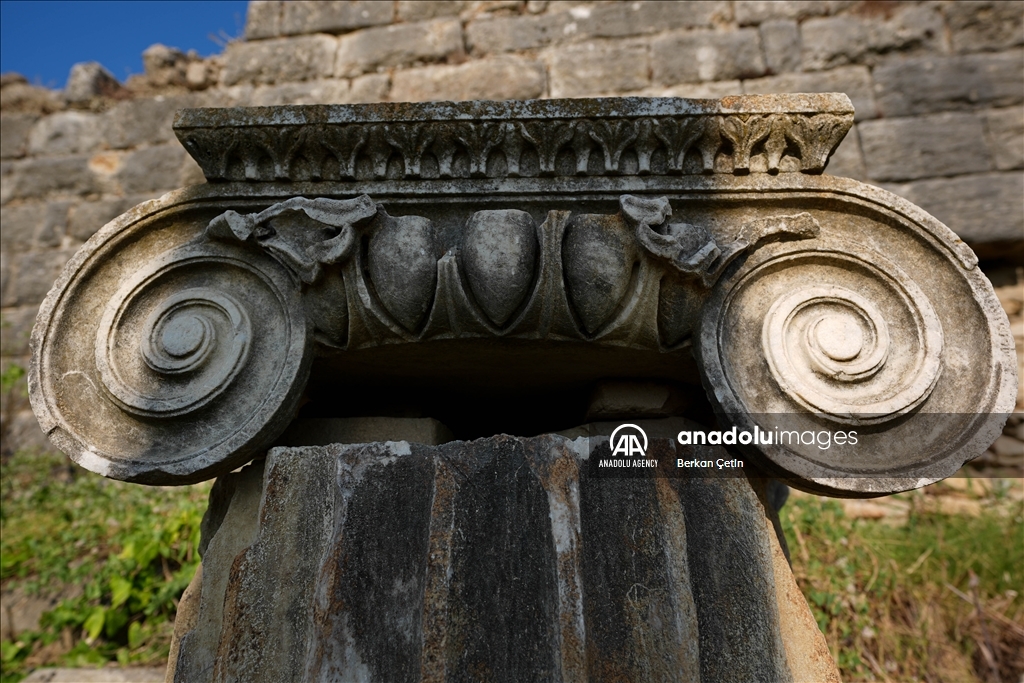
AYDIN, TURKIYE - AUGUST 11: A view from the ancient city of Magnesia in Aydin's Germencik district, Turkiye on August 11, 2024. The city was established in the 4th century BC by the Magnetes from Thessaly, according to ancient sources. The city, which played a significant commercial and strategic role due to its connection between Ephesus, Priene, and Tralleis, features a grid-plan street system and is known for its production of grain and figs and contains several notable structures, including the Artemis Sanctuary, the Bazaar Basilica, a theater, a 32-seat latrine, a bathhouse, an odeon, a 30,000-seat stadium, a Gymnasion, a Roman temple, and Byzantine walls. Magnesia was also part of the Seleucid and Pergamene kingdoms, as being one of the locations where the Artemis Festival, a major religious event of the era, was held. ( Berkan Çetin - Anadolu Agency )
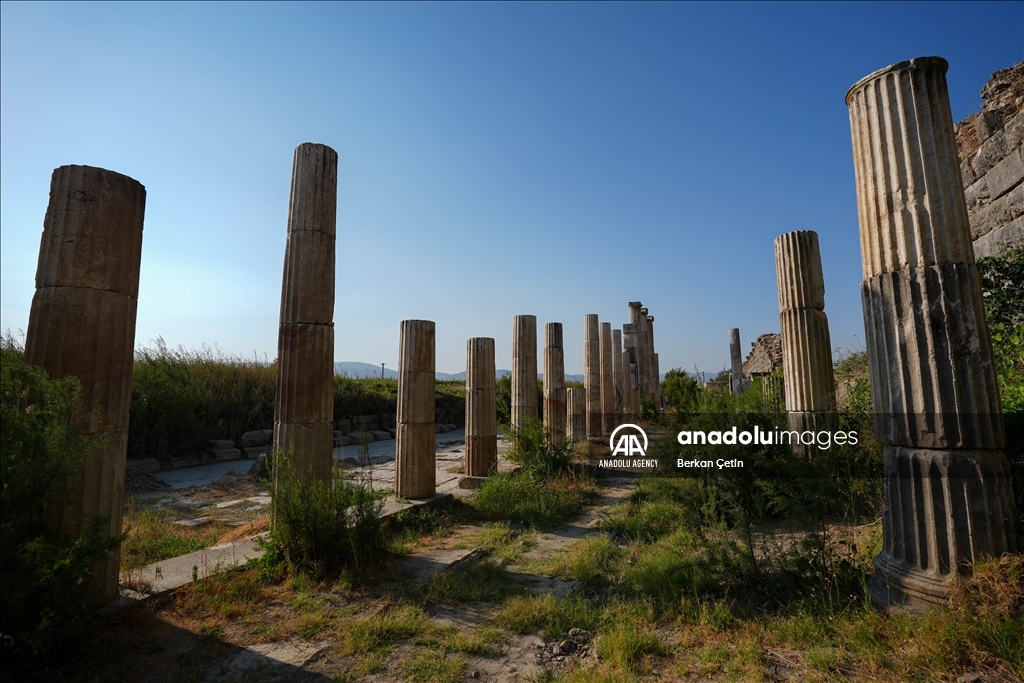
AYDIN, TURKIYE - AUGUST 11: A view from the ancient city of Magnesia in Aydin's Germencik district, Turkiye on August 11, 2024. The city was established in the 4th century BC by the Magnetes from Thessaly, according to ancient sources. The city, which played a significant commercial and strategic role due to its connection between Ephesus, Priene, and Tralleis, features a grid-plan street system and is known for its production of grain and figs and contains several notable structures, including the Artemis Sanctuary, the Bazaar Basilica, a theater, a 32-seat latrine, a bathhouse, an odeon, a 30,000-seat stadium, a Gymnasion, a Roman temple, and Byzantine walls. Magnesia was also part of the Seleucid and Pergamene kingdoms, as being one of the locations where the Artemis Festival, a major religious event of the era, was held. ( Berkan Çetin - Anadolu Agency )








